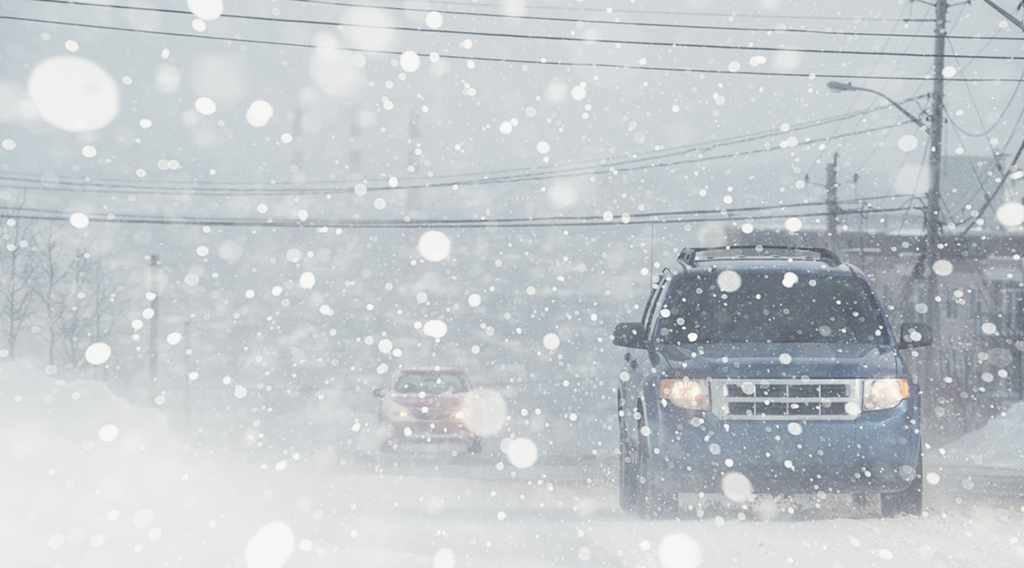
Know Before You Go | Essential Tips from Truckee CHP
Association NewsBy Tiffany Connolly
Preparing for a winter weekend trip to your mountain home is exciting for the entire family. However, that excitement can quickly turn to frustration, annoyance or something worse when you encounter a winter storm during your travels. The association and local law enforcement want to see you, your family and your guests make it over the pass and into your Truckee home safe and without incident, every time.
Tahoe Donner sat down with Truckee Area California Highway Patrol Sergeant Eric Strecker and Officer Pete Mann. They gave us an extensive list of helpful tips and important information on what to expect during a winter weather warning, how to best deal with dangerous road conditions and what to do when there are closures.
One of their biggest concerns are the latest smartphone navigation apps that have been routing drivers to side and back roads around the Truckee area. While the apps are extremely helpful for city drivers looking to avoid traffic, they can turn into dangerous tools in the mountains while navigating a winter storm.
“During our first storm this year, a large number of vehicles were rerouted onto roads that their cars were not equipped to handle. Not all streets are good for all cars. Some side roads aren’t maintained as well as the main roads, they’re not routinely patrolled, and if something happens, it may take us a long time to find you,” explained Strecker.
“These apps are designed to reroute you the shorter way, but they don’t factor in the current driving conditions, type of vehicle, plows going down the road, sudden road closures, or more.”
“Not only that, but when vehicles end up stuck on these back roads, it takes officers away from the freeway and main roads, delaying progress on getting drivers over the summit,” added Mann.
They stressed the importance of remaining on main roads, even if they are stopped, to ensure safety and to keep officers where they are needed most – on the busy highways.
Of particular concern are two-wheel drive vehicles without chains. While having all-wheel or four-wheel drive is helpful, it’s also recommended that cars use snow tires and carry chains. Streets in town seem fine and are driving well, however, once ill-equipped vehicles hit the steeper gradient on Northwoods Blvd., even small amounts of snow or ice can cause them to slide or get stuck.
Strecker and Mann also want drivers to know that while the roads may not have snow on them when being told to chain up, it’s because the roads ahead are dangerous, icy, or snowy, and they need to make sure cars are prepared for what they will be encountering.
“We are working extremely hard to get everyone moving. We’re utilizing every available option we can to get travelers where they are going. When the road is closed, there is always a very good reason,” said Strecker, who asked that drivers exhibit patience in variable conditions.
SNOW CHAIN ESSENTIALS
While snow chains are great for helping two-wheel drive vehicles navigate through the snowy roads, they become useless when not used correctly, which is a common occurrence seen by CHP officers.
“Snow chains don’t do any good when they’re put on the wrong axle, and we have seen plenty of travelers make that mistake, putting themselves and others in danger,” said Mann.
- Practice putting chains on your car prior to heading up the mountain.
- Know ahead of time if your chains go on the front or rear tires. Check your car’s user manual or talk to a mechanic if you are unsure.
- Know where chain controls are happening.
- Understand the different types of chain controls. See dot.ca.gov.
- Always put chains on in safe, well-lit areas before you get to the impacted area or attempting a steep, snowy grade.
- Use gloves and wear warm clothes when chaining up.

SAFE DRIVING TIPS
The CHP recommends that you always check weather reports and limit travel during a winter storm warning or something worse. Know what your car is equipped to handle and what it is not. Do not take side roads or roads that aren’t plowed, even though your navigation app may say it’s a good route.
- Slow down – speed is almost always a contributing factor in winter-related driving incidents.
- Increase distance between you and the car in front of you.
- Easy on the brakes, gas and steering while on slick roads. Sudden stops, acceleration or swerving can throw your vehicle out of control.
BE PREPARED: PACK YOUR CAR WITH NECESSARY ITEMS
It is not uncommon for travelers to have to chain up in a blizzard or get stuck in their cars for long periods of time during a winter storm.
“I’ve seen people putting chains on their cars wearing shorts; they didn’t have warm clothes in their car, and now they’re frantically trying to chain-up and they’re freezing,” said Strecker. “During every storm there is at least one person who gets locked out of their car when they stop to chain up.”
Strecker and Mann recommend keeping the following items in your car for winter travelling.



